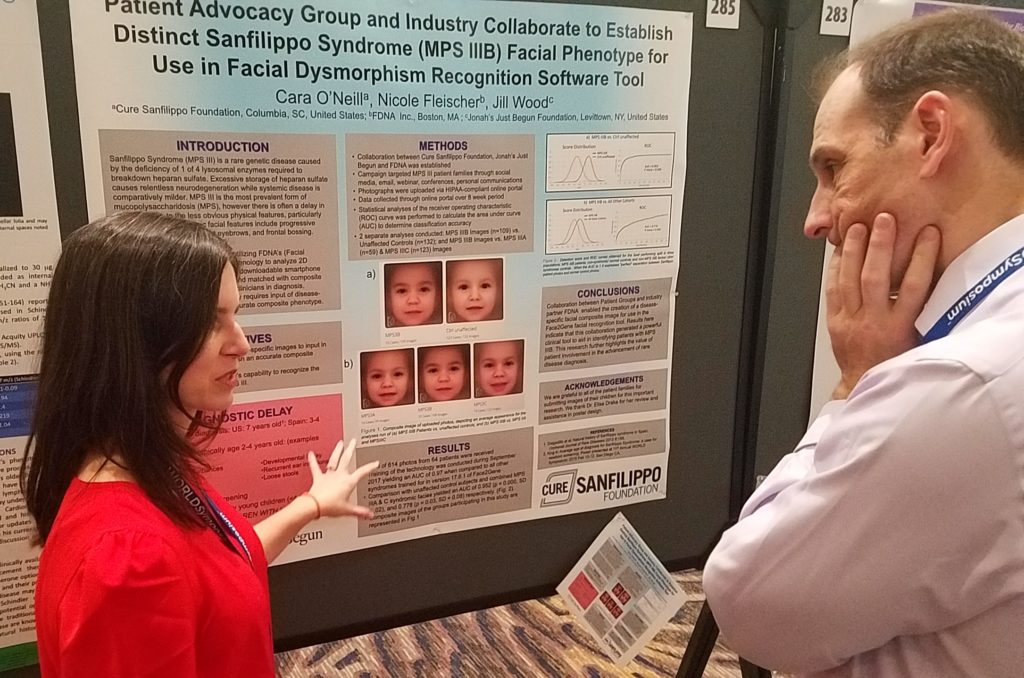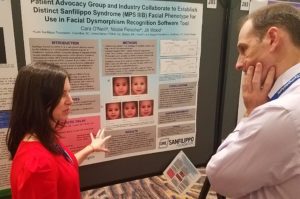For the young and undiagnosed, having a doctor who can recognize their disease can make the difference between entering a life-saving clinical trial or missing out. It can make the difference between gaining access to therapies that may make them more functional versus missing the window for a critical opportunity of growth. An earlier diagnosis makes the difference between a family facing the challenges of their child’s health with a community of support—or stepping forward into the unknown, alone.
“An early diagnosis for a child with Sanfilippo Syndrome can literally mean the difference between a chance at survival and certain death,” said Cara O’Neill, Scientific Director of Cure Sanfilippo. “We have spoken to families who have missed enrollment criteria due to age or disease progression, or even more sadly, they met criteria, but the trial did not have remaining spots to accept them. The number of patients included in clinical trials have historically been extremely small, sometimes taking as few as four patients.”
Those moments of powerlessness in the face of a rare diagnosis is something no parent or patient wants to feel. While in the past, advocacy groups have channeled their community’s hunger for involvement through fundraising and awareness campaigns—they are now utilizing the help of outside labs, life-science companies, researchers and online registries to turn their patient experience into viable research material.

Patient organizations like Cure Sanfilippo, Jonah’s Just Begun, and The Focus Foundation are all part of the Genomics Collaborative®, an FDNA initiative which seeks input from patients, advocates, and medical and research communities. Together, their knowledge and case examples update our understanding of different conditions and ultimately help to shorten the length of an undiagnosed patient’s diagnostic odyssey.
The Genomics Collaborative launched on World Rare Disease Day 2018. It held an open call to all corners of the community to get involved in research opportunities. Clinics and labs, universities, and patient advocacy organizations have all started using FDNA’s technology as a way to improve on the data they collect on their unique disease populations.
 With opportunities to open secure, online patient portals, health organizations, and advocacy groups can enter a child’s front-facing photo to be analyzed by these technologies in an effort to develop a computational analysis of facial features that relate to their specific genetic variation.
With opportunities to open secure, online patient portals, health organizations, and advocacy groups can enter a child’s front-facing photo to be analyzed by these technologies in an effort to develop a computational analysis of facial features that relate to their specific genetic variation.
Through mass patient participation efforts, the Genomics Collaborative works to collect and analyze patient photos and notes about their disease symptoms and progression to test for similarities in each disease population. The more patients that participate, the more accurate the model for each disease becomes.
Using next-generation phenotyping (NGP) technology and artificial intelligence, FDNA’s Face2Gene program holds a growing database of over 10,000 diseases, which is used by its global network of clinicians, labs, and researchers to advance precision medicine for hundreds of millions of patients.
With its extensive and growing reach, the Genomics Collaborative is working to familiarize all doctors with a visual of what these diseases can look like in patients of varying ages, genders, and ethnicities.

“Because 49,XXXXY is such a rare disorder, having a tool such as Face2Gene trained in the recognition of the facial phenotype of this syndrome increases awareness and accessibility of an earlier diagnosis,” said Dr. Carole Samango-Sprouse, Executive Director and Chief Science Officer at The Focus Foundation, who has been working with the Genomics Collaborative. “With earlier detection of boys with 49,XXXXY, the necessary biological treatment is likely to be available and allows these boys to reach their optimal outcome.”
To get involved and see if your disease population is currently being studied through the Genomics Collaborative please visit www.genomicscollaborative.com



